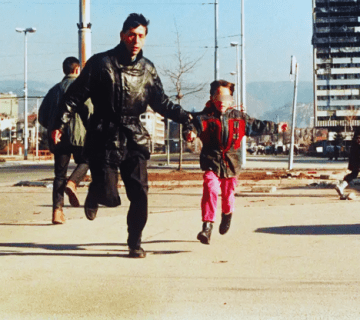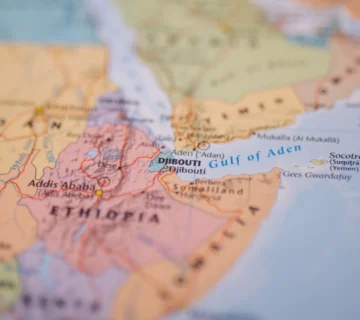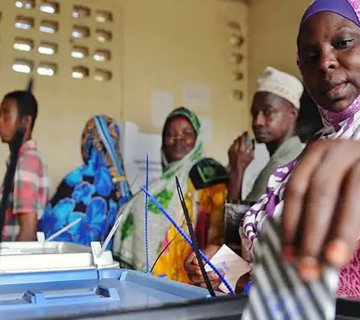The African Union (AU) has played a central role in stabilizing Somalia for over a decade, evolving through a series of missions to address the country’s security challenges. From the African Union Mission in Somalia (AMISOM) to the African Union Transition Mission in Somalia (ATMIS), and now the African Union Support and Stabilization Mission in Somalia (AUSSOM), these transitions underscore the persistent complexity of restoring peace and stability in Somalia. To fully understand the trajectory of AU involvement, it is crucial to analyze its historical context, achievements, challenges, and the implications of its current mission. The AU’s involvement in Somalia dates back to 2006, a pivotal year marked by Ethiopia’s military intervention aimed at installing the Transitional Federal Government (TFG) in Mogadishu and dislodging al-Shabaab. Ethiopia’s entry was prompted by the growing influence of the Islamic Courts Union (ICU), which controlled large swathes of southern Somalia, including Mogadishu. However, Ethiopian forces encountered fierce resistance, prompting the deployment of AMISOM as a strategic exit mechanism. The United Nations Security Council subsequently recognized al-Shabaab as a significant threat to international peace and security, authorizing the AU to contain and degrade the group. Consequently, AMISOM took on a peace enforcement role, defending the TFG and facilitating its transition into a permanent federal government by 2012.
Achievements of AU Missions in Somalia
Over the years, the AU missions in Somalia have achieved notable successes. First and foremost, they have stabilized the Federal Government of Somalia by protecting it against al-Shabaab’s insurgency. AMISOM played a critical role in transitioning the TFG to a permanent government in 2012. The mission reclaimed Mogadishu and numerous other strategic urban centers, liberating them from al-Shabaab’s control. These efforts were critical in restoring a semblance of governance and normalcy in previously contested regions. Between 2013 and 2016, AU missions supported the creation of federal member states, advancing Somalia’s federalization process. This federal structure aimed to decentralize power and reduce internal conflicts, providing a more inclusive governance framework. Additionally, capacity-building initiatives have equipped Somali security forces with the training needed to assume greater responsibility for the country’s security. These initiatives also extended to mentoring Somali police forces, enhancing their ability to maintain law and order in liberated areas. On the international front, AMISOM fostered collaboration among regional and global stakeholders, aligning efforts to combat terrorism and stabilize the region. The mission served as a model for multilateral interventions in fragile states.
Challenges Faced by AU Missions
Despite these achievements, the missions have faced numerous challenges. The operational complexity of coordinating multiple stakeholders—including AU troops, UN logistical support, and EU funding—has often strained efficiency. Sustaining AMISOM, the AU’s longest, largest, and most expensive mission, required significant financial and logistical resources. The mission also faced the protracted nature of the conflict; while territorial gains were made, al-Shabaab’s continued resilience highlighted the absence of a decisive victory.
Political instability stemming from disagreements between the Federal Government and member states further hampered efforts to achieve a lasting peace. These divisions have often undermined the unity needed to implement critical reforms and negotiate durable solutions. Moreover, the evolving tactics of al-Shabaab, including asymmetric warfare and targeted attacks, have presented ongoing security challenges. The group’s ability to exploit clan dynamics and governance gaps has enabled it to maintain influence in rural areas, complicating stabilization efforts. The human cost of the mission has been another significant challenge. AMISOM has suffered substantial casualties, reflecting the high-risk nature of peace enforcement in an active conflict zone. This toll has tested the resolve of troop-contributing countries and highlighted the need for sustained international support to bolster morale and resources.
Reasons for the Continued AU Presence
The continued presence of African Union missions in Somalia indicates the enduring complexity of the security and political landscape. Despite notable efforts by the AU to weaken al-Shabaab and reclaim key territories, the group remains a potent threat. Somalia’s Federal Government still faces significant challenges in independently maintaining security, necessitating ongoing support. The fragmentation between the Federal Government and federal member states further complicates this scenario. These tensions stem from unresolved disputes over power-sharing and resource allocation, exacerbated by historical grievances and regional disparities. For instance, states like Puntland and Jubaland have often contested the central government’s authority, seeking greater autonomy and control over their natural resources, such as oil and fisheries. This competition for influence and resources has stymied progress toward a unified governance framework. These divisions have hindered the development of effective institutions and a national security architecture capable of countering insurgency and maintaining stability.
The continued presence of African Union (AU) missions in Somalia underscores the enduring complexity of its security and political landscape. Despite notable successes by the AU in weakening al-Shabaab and reclaiming key territories, the group remains a potent threat. The Federal Government of Somalia still faces significant challenges in independently maintaining security, necessitating ongoing support. The fragmentation between the Federal Government and federal member states, fueled by unresolved disputes over power-sharing and resource allocation—exacerbated by historical grievances and regional disparities—has stymied progress toward a unified governance framework. For instance, states like Puntland and Jubaland have often contested the central government’s authority, seeking greater autonomy and control over their natural resources, such as oil and fisheries. This competition for influence and resources has hindered the development of effective institutions and a national security architecture capable of countering insurgency and maintaining stability.
The absence of a comprehensive political solution perpetuates the conflict, as grievances related to governance, resources, and representation remain unaddressed. However, the AU’s presence acts as a stabilizing force, not only in containing al-Shabaab but also in facilitating dialogue and fostering conditions for sustainable peace. The AU’s efforts have yielded tangible results, including the reduction of al-Shabaab’s territorial control and the establishment of secure zones that enable humanitarian aid and development initiatives. Moreover, the regional and international dimensions of Somalia’s instability further justify the continued involvement of the AU. The spillover effects of the conflict—such as cross-border terrorism, refugee flows, and disruption of trade—pose risks to neighboring countries and undermine regional development. The AU’s role extends beyond Somalia, contributing to broader regional stability by addressing these transnational challenges.
Future Prospects and Recommendations
The future of AUSSOM hinges on addressing Somalia’s political and security challenges. Strengthening Somali security forces through enhanced training, equipping, and mentorship will be essential for a successful transition. These efforts should be complemented by investments in infrastructure and governance to consolidate gains and foster resilience in liberated areas. Political reconciliation between the Federal Government and its member states remains critical to achieving sustainable peace. This requires inclusive dialogue, trust-building measures, and equitable resource-sharing arrangements.
Moreover, addressing the socio-economic drivers of instability, including poverty and unemployment, will be vital in undermining al-Shabaab’s appeal. Development programs focused on education, healthcare, and job creation can help foster stability and reduce vulnerabilities to extremism. While substantial progress has been made, Somalia’s journey to self-reliance and lasting stability remains fraught with challenges, with the new AU mission reflecting both achievements and the work that lies ahead.
Photo Credits: AUSSOM X PAGE
Bravin Onditi is a Researcher at the HORN Institute
The views expressed in this article are those of the authors and they do not necessarily reflect the position of the HORN Institute.



